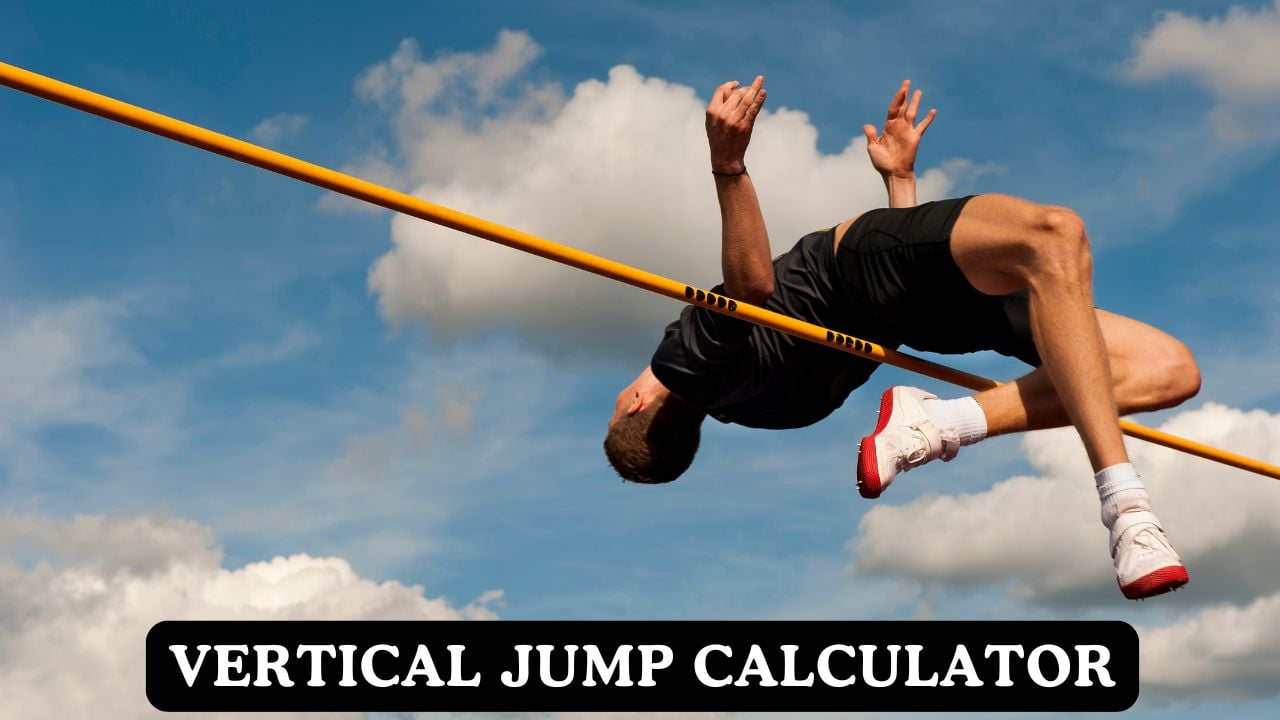🚀 Vertical Jump Calculator
Calculate your vertical jump potential from squat strength or determine the squat strength needed for your target jump height using scientifically validated formulas

Complete Vertical Jump Training Guide
Research-Based Formula Validation
Our calculator uses an improved tiered approach based on extensive research examining the relationship between maximal strength and explosive power output. Rather than a single linear formula, our method accounts for diminishing returns at higher strength levels and individual variations based on training status. Research shows moderate to strong correlations (r = 0.52-0.88) between squat strength and vertical jump performance, but these relationships vary significantly across strength levels and populations.
Strength-Power Relationship Fundamentals
Maximum strength provides the foundation for explosive power development. Athletes require adequate strength reserves to express power effectively during rapid movements. The squat-to-bodyweight ratio serves as a reliable predictor because it reflects the neuromuscular system’s capacity to generate force rapidly. Our calculator helps identify whether athletes need more strength development or power conversion training based on their current performance relative to predictions.
Performance Standards & Athletic Benchmarks
| Sport/Category | Position/Level | Vertical Jump (inches) | Required Squat Ratio |
|---|---|---|---|
| NFL Football | Defensive Back | 35-40 | 2.3-2.6x BW |
| Wide Receiver | 33-37 | 2.2-2.4x BW | |
| Linebacker | 30-35 | 2.1-2.4x BW | |
| NBA Basketball | Guards | 28-32 | 1.9-2.2x BW |
| Forwards/Centers | 24-30 | 1.7-2.0x BW | |
| Volleyball | Men’s Elite | 30-36 | 2.0-2.3x BW |
| Women’s Elite | 22-28 | 1.6-1.9x BW | |
| General Population | Average Male | 16-20 | 1.3-1.6x BW |
| Average Female | 12-16 | 1.1-1.4x BW |
Training Optimization Strategies
🎯 Strength Surplus Profile
Athletes who squat more than predicted for their jump height need explosive power development. Focus on plyometrics, depth jumps, and ballistic movements. Include reactive training and rate of force development exercises. Reduce heavy strength volume temporarily while emphasizing power conversion. Our explosive leg exercises provide specific power development protocols.
⚡ Power Surplus Profile
Athletes jumping higher than predicted need strength foundation building. Prioritize heavy squats, deadlifts, and unilateral strength work. Focus on progressive overload in the 85-95% 1RM range. Maintain jumping ability with minimal plyometric volume while building strength capacity. Use barbell leg exercises for comprehensive strength development.
⚖️ Balanced Development Profile
Athletes matching predicted values should maintain balanced training combining strength and power elements. Continue progressive strength training while adding sport-specific power work. Focus on movement quality, technical proficiency, and periodized training cycles. Include unilateral leg exercises for movement pattern development and injury prevention.
Formula Breakdown & Scientific Basis
Core Calculation Method
Ratio = 1RM Squat Weight ÷ BodyweightStep 2: Apply Tiered Calculation Method
If Ratio < 1.0: Jump (cm) = (Ratio × 22) + 8If 1.0-1.5: Jump (cm) = (Ratio × 18) + 12If 1.5-2.0: Jump (cm) = (Ratio × 15) + 16.5If 2.0-2.5: Jump (cm) = (Ratio × 12) + 22.5If > 2.5: Jump (cm) = (Ratio × 8) + 32.5Step 3: Apply Body Weight Adjustments
If < 60kg: Multiply by 1.08If > 90kg: Multiply by 0.95
80 kg athlete with 140 kg squat → Ratio = 1.75
Jump = (1.75 × 15) + 16.5 = 42.75 cm (16.8 inches)
Result falls into "Intermediate" performance category
Limitations & Individual Considerations
Formula Accuracy Factors
Our calculator provides research-based estimates with improved accuracy through tiered calculations, but individual variation still affects results. Key considerations include:
- Squat Depth: Calculations assume full-depth squats (hip below knee). Partial squats overestimate strength ratios by 15-25%.
- Training Background: Athletes with 3+ years of jumping experience may exceed predictions by 10-20% due to superior technique and neural adaptations.
- Anthropometry: Athletes with longer limbs relative to torso may underperform predictions, while those with shorter limbs may exceed them.
- Fiber Type Distribution: Individuals with >60% fast-twitch muscle fibers typically exceed predictions by 5-15%.
- Neural Efficiency: Rate of force development and motor unit synchronization create 10-30% individual variation.
- Age and Gender: The formula works best for males aged 18-35. Females may need 15-20% higher strength ratios for similar jump heights.
- Recent Training: Athletes in-season or recently trained may perform 5-10% below predictions due to fatigue.
Sport-Specific Applications
Basketball Performance Demands
Basketball requires both maximal and repeated jumping ability. Guards need reactive jumping for defense and shooting, while big men require sustained jumping power for rebounding. Training must address bilateral and unilateral jumping patterns, with emphasis on quick second jumps and directional changes. Include posterior chain exercises for complete jump development and injury prevention.
Volleyball-Specific Requirements
Volleyball demands approach jumping ability, which typically exceeds standing vertical by 2-4 inches. Attack positions require maximal jumping power, while defensive players need quick, repetitive jumping capacity. Training should emphasize approach mechanics, arm swing contribution, and sport-specific timing patterns. Balance bilateral strength work with unilateral power development to address asymmetric demands.
Track and Field Applications
High jumpers and long jumpers represent specialized jumping athletes with different mechanical requirements. High jump emphasizes maximal height with horizontal-to-vertical force redirection, while long jump requires horizontal force application. Sprint events benefit from vertical power for acceleration mechanics. Training specificity becomes critical for optimal event performance.
Important Disclaimer
This calculator provides estimates based on research correlations between squat strength and vertical jump performance, using an improved tiered approach that accounts for diminishing returns at higher strength levels. Individual factors including training history, biomechanics, technique, and genetics can cause actual results to vary by 15-30% from predictions. Results should be used as training guidance rather than absolute predictions. The calculator is most accurate for male athletes aged 18-35 with full-depth squat technique. Always prioritize proper movement quality and progressive loading to prevent injury. Consult qualified strength and conditioning professionals for personalized program design, especially if you have pre-existing injuries or movement limitations.

Manish is a NASM-certified fitness and nutrition coach with over 10 years of experience in weight lifting and fat loss fitness coaching. He specializes in gym-based training and has a lot of knowledge about exercise, lifting technique, biomechanics, and more.
Through “Fit Life Regime,” he generously shares the insights he’s gained over a decade in the field. His goal is to equip others with the knowledge to start their own fitness journey.
